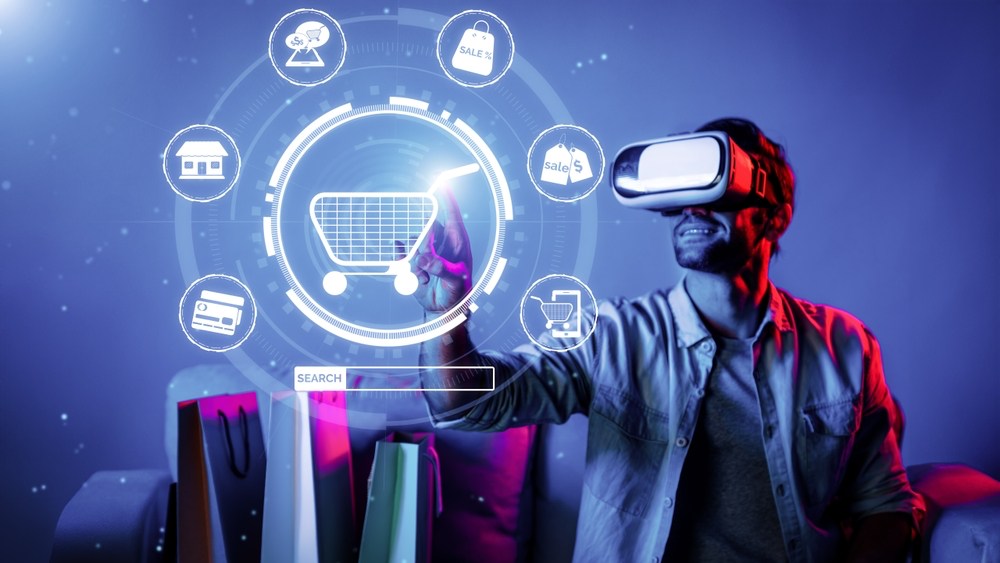As wearable technology and smartphone adoption rise, so do AR applications, which have become crucial in transforming the interactions between the digital and physical worlds. Pokémon GO brought this technology in July 2016, and since then, many developers have been trying hard to get a taste of the future with AR. Therefore, this article will explore augmented reality app development while highlighting various aspects of this phenomenon.
AR Market Statistics
Before proceeding with AR app development, review some statistics related to this topic to obtain a clear picture of this niche. The augmented reality market had a value of \$29.5 billion in 2021 and will reach $225.5 billion by 2030.
These are the findings of the Global Augmented Reality Market statistics forecast, which claims a growth rate of 25.4%. Let’s review the other research evidence in the table below, which analyzes AR adoption, business outcomes, and user engagements.
| Research Aspects | Outcomes |
| AR Adoption | 70% Believe AR helps learn new skills |
| 16% of Retailers use AR apps | |
| 64% AR elevates shopping experiences | |
| Business Outcomes | 67% Increases the incomes of marketing agencies |
| 40% Average conversion rate increase | |
| 61% Choose retailers with AR experiences | |
| User Engagement | 55% Picks AR based on shopping for entertainment |
| 32% of US citizens like playing AR games | |
| 38% AR enhance gaming experiences |
What are AR Apps?
Software applications that integrate digital visual content into real-world sight are called augmented reality (AR) apps. They usually add visual and audio components in natural fields of sight while providing essential features or information. Moreover, they can take captured images and overlay 2D or 3D objects, AR doodles, emojis, and filters on them.
Most apps work by pointing smartphones at objects of interest and scanning the object’s surface to calculate size and distance. For instance, open the app, place the app scanner on the spot where you want a tattoo, and see how it looks.
How Do AR Apps Work?
Augmented Reality (AR) apps work by overlaying digital information—such as images, videos, or 3D models—onto the real-world environment through the use of a device’s camera and sensors. Here’s a breakdown of how AR apps function:
1. Device Hardware
- Camera: Captures real-time video of the surrounding environment.
- Sensors: Gyroscope, accelerometer, and GPS help determine the device’s orientation and position.
2. Software and Algorithms
- Computer Vision: Processes the video feed from the camera to recognize and track real-world objects or surfaces. This involves detecting features like edges, corners, and textures.
- SLAM (Simultaneous Localization and Mapping): A technology used to map the environment and track the device’s position within it in real time. This is crucial for placing digital objects accurately in the physical world.
3. 3D Rendering
- The AR app uses 3D rendering engines to create digital objects or overlays. These objects are then placed within the camera’s view in a way that matches the physical environment.
- Lighting and Shadows: To make the AR experience more realistic, the app simulates lighting and shadows that correspond to the real-world environment.
4. User Interaction
- Touchscreen: Users can interact with digital objects using gestures like tapping, pinching, and swiping.
- Voice Commands: Some AR apps support voice commands for hands-free interaction.
5. Integration with External Data
- AR apps often integrate with external data sources to enhance the experience. For example, an AR app for navigation might use GPS data to provide turn-by-turn directions overlaid on the real world.
6. Display
- Smartphones and Tablets: Use the device’s screen to display the augmented environment.
- AR Glasses/Headsets: Devices like Microsoft HoloLens or Magic Leap One provide a more immersive experience by projecting digital information directly onto the user’s field of view.
Example Use Cases
Navigation: Apps provide real-time directions overlaid on the physical world.
Gaming: AR games like Pokémon Go overlay digital characters onto the real world.
Retail: Apps allow users to see how furniture might look in their homes.
Education: AR apps can overlay information on historical sites or physical objects for educational purposes.
Best Augmented Reality Mobile Apps
According to Gartner, AR uses text, graphics, audio, and other virtual information with real-world object integration. If you are new to an augmented reality app development company, look into the examples of AR apps listed below for inspiration.
1. IKEA Place (Android | iOS)
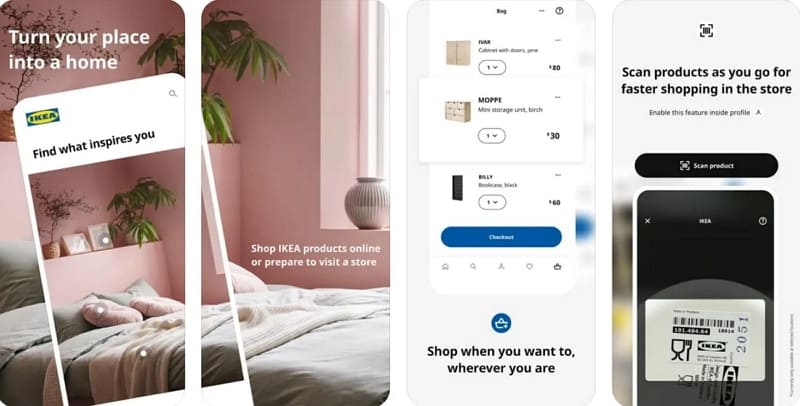
This app allows customers of IKEA products to experience and experiment with how the product would look and fit in their place. It also gives them information about the product’s dimensions, color, prices, and links for online ordering so they can make informed decisions. Since its launch in 2017, it has been downloaded 12 million times, according to a report by Google.
2. SketchAR (Android | iOS)
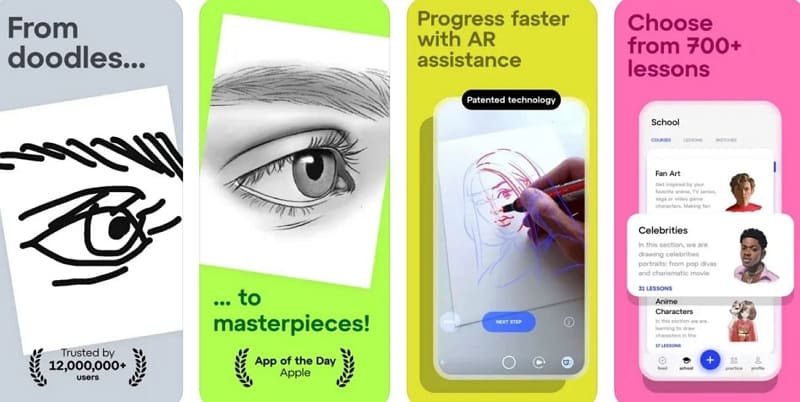
If you are in a learning phase of sketching art, this AR app development company can help you draw better. It contains computing augmented reality and artificial intelligence technology, which lets you see virtual lines on paper by opening its camera. Besides, it offers more than 500 sketch lessons from artists you like while boosting your progress with AR.
3. Google Maps (Android | iOS)
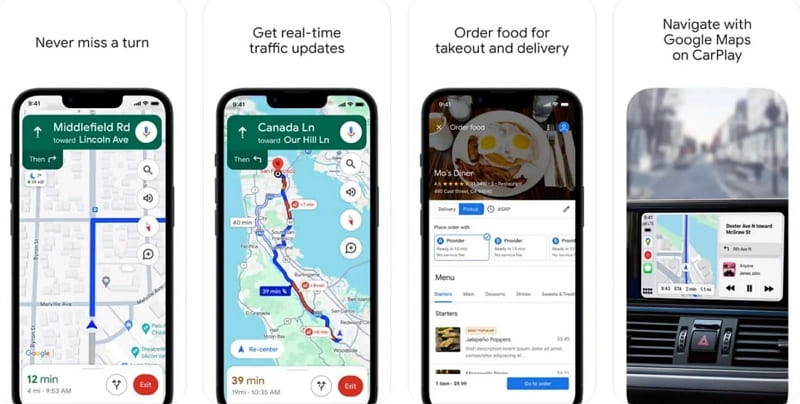
Google Maps is the most powerful navigation application worldwide, and it uses built-in AR technology to find new routes faster. Users need to point their cameras toward the road and follow the app’s directions, considering traffic, trains, or walking routes. Surprisingly, it proves fruitful for impaired individuals and gives everyone a fun experience when a virtual fox appears to guide them.
4. Snapchat (Android | iOS)
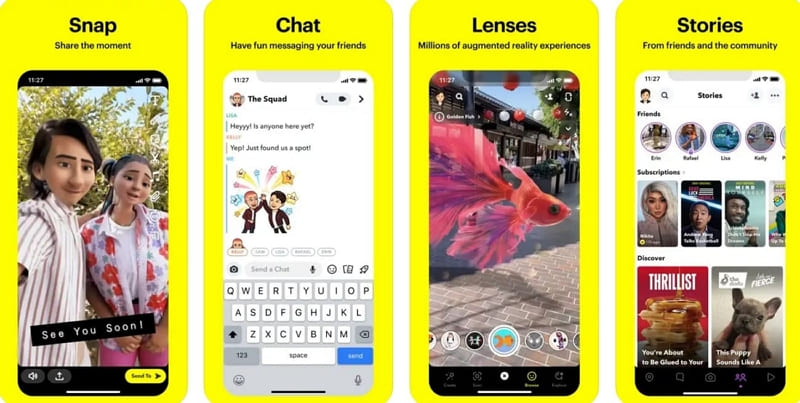
Primarily, it is a social media app with augmented reality app development features like geotagging and face filters. From the Snap AR Lens Studio, developers and artists unleash their creativity by building new AR lenses for consumers. With 330 million daily active users, Snapchat is also one of the most popular applications embracing AR technology for everyone.
5. YouCam Makeup (Android | iOS)
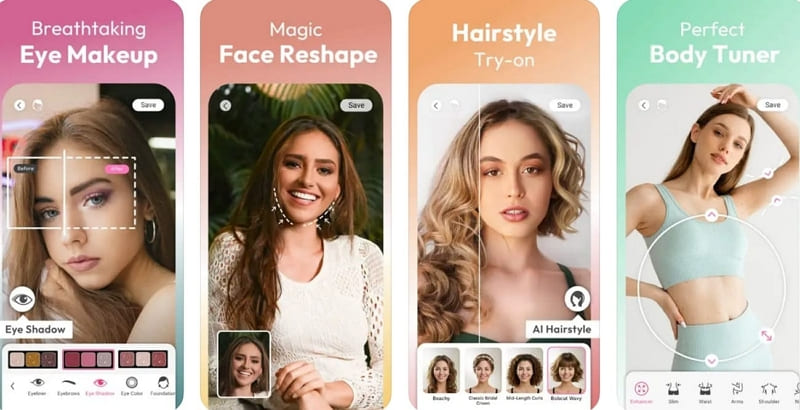
For virtual makeover filters, the YouCam Makeup app uses AR technology and is known as a camera-based application. It also has an entire library of makeup filters, where users can even customize virtual blush, lipstick, and eye makeup. By applying those AR filters, consumers can redefine their looks and appearances while trying NFT-based tabs.
How to Create an AR App: Development Guide
Here comes the main point of discussion: building an AR app, which even professionals find hectic and overwhelming. Therefore, this section cuts down the process into various steps and sub-categories, helping you streamline the app creation without confusion.
Step 1: Determine Project Scope and Requirements
Before anything else, define your business goals and clarify what you want to achieve from the new AR application. Afterward, figure out the features you wish to include in your project as some of the essential features are given below for ideas:
- Maps Integration: Helps in navigating directions and facilitates location-based games.
- Marker Recognition: Provides physical markers to align virtual objects.
- GPS Location Tracker: Facilitate live-time location tracking.
- Social Media Sharing: Share captured content with others in a few seconds.
- Built-in Image Editor: Edits the captured content and virtual objects spontaneously.
- 2D & 3D Elements: Ability to scan virtual objects from 2D or 3D libraries to overly on scanned scenarios.
- Gyroscope & Accelerometer: Capture AR experiences that comprise real environments with virtual objects.
- Real-time Camera Support: Scan surroundings and identify objects or places.
Select Platform
Once you decide on the feature set to include in AR app development, identify the platform to launch the final product. It is crucial to decide before app creation because various platforms support various features and involve different processes. Here, you can pick Apple devices, whereas iPhone, iPad, or MacBook are the supported platforms.
Alternatively, developers can select Android and Microsoft devices, which include Windows computers and HoloLens OS 2. There is also the choice of Web browsers, which means your AR technology could work on Edge, Firefox, Safari, and Chrome.
Step 2: Choose Development Technologies and Approaches
Upon deciding your project goals, inform your software engineers and get help picking the right tech stack. They will consider your budget, project requirements, and access to tech talents for technology suggestions. For now, we have explained 4 augmented reality app development approaches below, which might extend your knowledge.
1. Native
This approach needs certain technologies to build a particular platform-only application for outstanding performance. For instance, Swift and Objective-C technologies are best suited for Apple devices-only applications. Whereas Java and Kotlin are best for Android, and C# is a great choice for Windows-specific applications.
2. Cross-Platform
It requires third-party frameworks and software kits (SDKs) to build an AR app that can work on iOS, Android, and all platforms. This approach lowers the production time and budget while offering high-quality features like ZEGOCLOUD SDKs. Some of the most popular programming languages for cross-platform AR apps are C++, C#, Java, and JavaScript.

3. Hybrid
Although this AR app development company approach is not well-known, it uses the same codebase for building apps. They are web-based applications that can run on smartphones after downloading from App Stores and Play Stores. Their markup languages are HTML, CSS, and JavaScript, which are also labeled as their programming language.
4. Web AR
Lastly, if you are looking for a web-based AR app, JavaScript, HTML, CSS, Python, and TypeScript would be great options. As web-based apps can’t work offline, App Stores do not review them for listing. Furthermore, they perform slower than native AR applications, yet the programming languages for web AR are mentioned above.
Step 3: Select an AR Application Type to Build and Launch
Based on the distinct goals of developers and businesses, there are five types of AR app development to let you achieve various tracks. To give you a clear picture of all types we have drawn a table below that you can review and clearly grab the concepts.
| Types of Apps | Definitions | Examples |
|---|---|---|
| Projection-based AR apps | They project digital images and objects onto a real-time surface. | LUMOplay and Hololamp |
| Location-based AR apps | They use GPS, compasses, and accelerometers to show content and read locations. | Pokémon GO and Google Maps |
| Outlining-based AR apps | They use sensors and cameras to mark and highlight edges and boundaries. | GhostPacer and AccuVein |
| Image Recognition AR apps | They read objects and images through different methods to make information accessible. | Zappar and AR Flashcards |
| Superimposition-based AR apps | They replace the actual views and content with AR. | IKEA Place and Amikasa |
Step 4: Pick an SDK and Other Teck Stacks
Another important step of augmented reality app development is the selection of a software development kit. These kits make the development process faster and prevent software errors while letting you add special features to your product. However, there are numerous tools in the market, making the selection difficult, so consider the given points when choosing:
- Is it meeting your AR project goals?
- Which operating system will it support?
- Does it offer native AR tools support?
- What about the future AR app updates?
- Are there any licenses and monetization concepts?
- Which programming language would it involve?
For your help, let us introduce you to ZEGOCLOUD SDKs and APIs, which are easy to embed and guarantee data privacy. Besides, it provides tutorials, guides, and documentation with the fastest customer support for developers. Using their SDKs and APIs, you can add face effects, filters, background segmentations, and various other features with precise tracking.
Furthermore, AI algorithms will allow your app to track hand movements with full body tracking and face recognition. This way, your augmented reality app development company can launch virtual face makeup, AR effects, and 2D/3D stickers in apps.
Other Tech Stacks
Despite ZEGOCLOUD, after counting their supported features, you can look into Vuforia, Apple ARKit, Maxsr, ARToolKit, and Wikitude tech stacks. Although their processes are complex and less budget-friendly than ZEGOCLOUD, they are still considerable choices based on needs.
Step 5: Building Initial Mockups and Gather Teammates
Now, it’s time to create an AR app in real-time, so start by designing an initial mockup after analyzing business requirements. At this stage, you can contact a UI/UX designer and software engineer for different platforms like Google and iOS.
Then, gather your team and share documents so they can understand your development needs. Your team might consist of a project manager, web developers, QA engineers, and 2D/3D designers. You need to gather constructive feedback from each expert to improve your app for smooth processing.
Step 6: Complete Technical Milestones, Test, and Release the App
Without further delay, start the application development process by creating a coherent list of tasks. In this regard, you need to schedule deadlines for code review, feature deployment, and documentation. After planning, develop the architecture of the AR app using ZEGOCLOUD SDKs or other tech stacks you chose earlier.
You need to develop a minimum MVP as fast as possible with useful features and decide to add additional features in upcoming versions. Later, collaborate with AR app experts and test your application before launching it publicly. Here, you can take quality assurance professional help against your requirements and goals to ensure good performance. Launch the app afterward and keep monitoring, maintaining, and updating for customer engagements.
The Role of Augmented Reality in Multiple Business Domains
Based on some reports, 63% of businesses are using AR technologies and focusing on AR app development for customer engagement. It also provides a competitive advantage, boosts sales, and optimizes workflow, fulfilling the needs of the modern business era. To study the implications of AR in business sectors in depth, you should delve into the points mentioned below:
1. Retail and eCommerce
With AR technologies, potential customers can virtually put clothes, makeup, and other products, eliminating the need for actual try rooms. For instance, Bentley has an AR visualizer showing SUV models’ interior and exterior and test drives before bookings. Luxury hotels like The Hotel Adlon Kempinski in Berlin allow prospective guests to check their facilities via AR technology.
2. Health and Education
As multisensory learning experiences help memorize for longer, AR app development companies focus on 3D health education. For example, Case Western Reserve University announces a 3D holographic anatomy program to see virtual cadavers. Additionally, this technology helps in employees’ training to prevent dangerous real-world mistakes like Walmart and Chipotle are working on.
3. Design and Maintenance
At the early stage of product creation, businesses use AR to create 3D designs to analyze the function and form of products. After design, AR proves beneficial in maintaining or repairing the product with 3D guides. For example, Hyundai and Kia are launching an AR owner’s manual that provides how-to information for maintaining and repairing vehicles.
4. Entertainment and Media
To enhance storytelling, movies, and series incorporate unrealistic elements like dinosaurs with the help of augmented reality app development. Examples of movies with AR technologies for action scenes are Avatars, Iron Man, and Terminator. In addition to that, some of the sports and weather forecast channels use AR technologies to better visualize information.
5. Real Estate and Military
Through AR glasses or smartphones, prospective buyers can see property overlays with room layouts, potential upgrades, and furniture arrangements. Besides helping architects and property sellers, AR technology contributes to the military business. In this regard, remember the partnership between Microsoft’s HoloLens and the United States Army to give soldiers realistic training.
Enhancing AR Applications with ZEGOCLOUD: Seamless Real-Time Communication for Business Success
Augmented Reality (AR) applications are transforming industries by offering immersive experiences. Integrating ZEGOCLOUD’s real-time communication capabilities can further elevate these applications, driving business success through seamless interaction and collaboration.
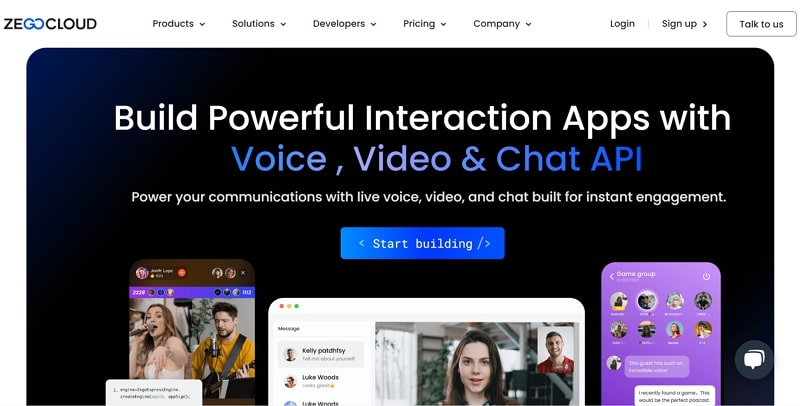
Key features of ZEGOCLOUD SDK for AR apps:
1. Real-Time Collaboration
Use Case: Teams working on complex projects can overlay technical data onto physical equipment using AR while communicating in real-time via ZEGOCLOUD.
Benefits:
- Enhanced Productivity: Real-time data sharing and decision-making.
- Cost Savings: Reduced need for travel and physical presence.
2. Interactive Customer Support
Use Case: Customer support agents can guide users through troubleshooting processes with AR visuals, enhanced by ZEGOCLOUD’s real-time audio and video communication.
Benefits:
- Improved Satisfaction: Quick, effective resolutions lead to happier customers.
- Efficiency: Faster issue resolution reduces support costs.
3. Virtual Showrooms and Product Demos
Use Case: Retailers create virtual showrooms where customers explore products in AR, with real-time assistance from sales reps through ZEGOCLOUD.
Benefits:
- Enhanced Experience: Customers engage more and make informed decisions.
- Global Reach: Attracts a worldwide customer base without physical stores.
4. Remote Training and Education
Use Case: Educational institutions and companies use AR for interactive training, while ZEGOCLOUD enables real-time instructor feedback.
Benefits:
- Engaging Learning: AR enhances engagement and effectiveness.
- Scalability: Training can reach a large audience regardless of location.
5. Healthcare and Telemedicine
Use Case: Doctors visualize patient data in AR and provide real-time consultations via ZEGOCLOUD. Surgeons can receive remote assistance during operations.
Benefits:
- Better Patient Care: Real-time data and consultations improve diagnoses and treatments.
- Access to Specialists: Remote consultations with top specialists become possible.
Integrating ZEGOCLOUD with AR Applications
To integrate ZEGOCLOUD’s real-time communication capabilities with your AR applications:
- SDK Integration: Use ZEGOCLOUD’s SDKs compatible with various platforms to embed real-time audio and video features into your AR app.
- Customization: Tailor communication features to suit specific use cases, ensuring seamless integration with AR functionalities.
- Testing: Conduct extensive testing to ensure smooth performance and user experience.
- Deployment: Launch the enhanced AR application, providing users with powerful, interactive, and real-time capabilities.
By combining AR with ZEGOCLOUD, businesses can offer innovative solutions that enhance collaboration, support, training, and customer engagement, leading to significant competitive advantages and success.
Conclusion
In short, this article has provided every detail related to augmented reality, including some research facts and popular AR apps. Moreover, it covered an in-depth section showing how to make an AR app and its role in various business sectors. Finally, it becomes obvious that building an AR app is crucial for every business, and ZEGOCLOUD APIs and SDKs can speed up the process.
Read more:
Let’s Build APP Together
Start building with real-time video, voice & chat SDK for apps today!









